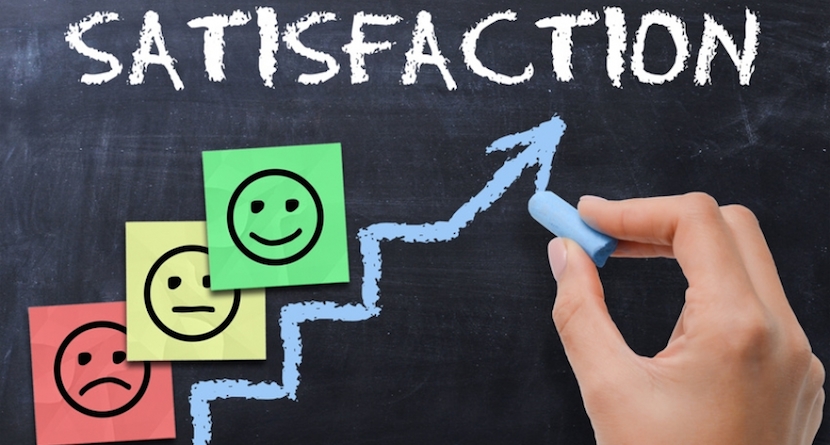At the Golf, Inc. strategies conference two weeks ago, both my keynote presentation and numerous entities around the exhibit hall sought to provide insights and solutions towards the goal of improving golfer satisfaction. In previous columns, I’ve spoken about what our research has consistently shown to be some of the key drivers of satisfaction in a golfer’s experience. Today, I want to turn to another of the verticals that we work within: to advocate for effective ways to measure it.
The casino industry is a fascinating case study in the effective monitoring of consumer needs and building real-time customer service mechanisms to proactively address them. I wrote before about how top casinos often deploy what we call a “2C2R” approach (Communications, Community Building, Recognition and Reward) that can serve as the lynchpin to growing guest loyalty.
The casino industry is no different than the public access golf facility market in that a proliferation of competitive options are fighting for share among the most lucrative players. What the casino industry has that is largely lacking in the golf space are well-designed, real-time measurement systems that identify service lapses and can proactively inform the necessary corrective changes.
Sure, there are a number of upstart golf industry services providers that offer “surveys in a box” or streamlined technology-driven solutions that purport to make it easy for any facility to offer a player satisfaction survey. But to a fault, what I have seen fails to address or acknowledge the subtle melding of art and science that are essential for quality market research.
Just as one wouldn’t trust a medical diagnosis to Web MD, it is folly to assume that these canned solutions are adequate surrogates for a well thought out survey design, proper respondent sampling, effective data hygiene and rigorous analytical techniques that researchers like ourselves have spent decades studying and refining.
As a benchmark, let me offer up some of the particulars of a custom solution that we designed for a large casino property in the North East. Faced with a hyper-competitive market and declining volumes of play, we set out to build a system that integrated behavioral data captured on guests’ player cards, with attitudinal data regularly collected through attitudinal studies, and overlayed a critical third element that measured behaviorally specific post-visit surveys, sent by email within 48 hours of each player’s visit.
Here we were able to measure levels of satisfaction with each of the customer-facing amenities at the property that a guest actually encountered during their most recent visit. Results were aggregated over relevant junctures of time, weekly in this case. Where the property derived the greatest utility in our custom solution was in the back end analytics that we conducted and posted on a customized dashboard each week.
Far from off the shelf “solutions,” this dashboard was designed to speak to those drivers of satisfaction and service delivery that research showed had the highest correlation to overall satisfaction. We achieved this through a process called key driver analysis, which in more layperson’s terms enabled us to statistically determine how important each of various experiential elements were in contributing to a guest’s overall satisfaction.
We displayed these results and aggregated them into both departmental and overall property performance scores. The property now had a single numerical barometer from which to measure their service delivery. Individual departmental areas competed against themselves and each other to meet performance thresholds established by management.
The utility of the solution didn’t stop there. Recognizing that different tiers of guests (driven by their recency and frequency of visitation and spending—a topic, that I also covered in this space, a few weeks back) required different levels of attention, the dashboard provided an easy tool to quickly identify performance against those guests from each tier. We were also able to provide one-click access to charts that detailed departmental performance across various day parts and against guests who had different play outcomes.
Yes, the winners were generally more satisfied than the losers…something that we’ve also observed in measuring elite amateur golfer satisfaction with their experience at various national championships and qualifying events.
Such an approach yields an important layer of context to one’s analysis and conclusions. For example, we found that performance scores varied significantly in one of our client property’s food and beverage venues between early evening and late night. This gave management the impetus to rectify particular staffing issues during the underperforming time periods.
Finally, in this case, we also built in a way to allow property management to look at results by guest, showing their satisfaction history and trending, flagging those that were the greatest attrition threats. We tied this insight into the property’s CRM system, which allowed casino hosts to reach out to their assigned players in ways that demonstrated high levels of personalized attention.
It’s probably easy to envision how such an approach could have a similar application at golf facilities. Recognizing that a custom approach offers flexibility, such a solution needn’t be cost-prohibitive, and the benefit in customer retention and lifetime value would likely far exceed the initial investment.
If we as an industry want to pay more than lip service to golfer satisfaction, we owe it to ourselves to invest in proper measurement.




